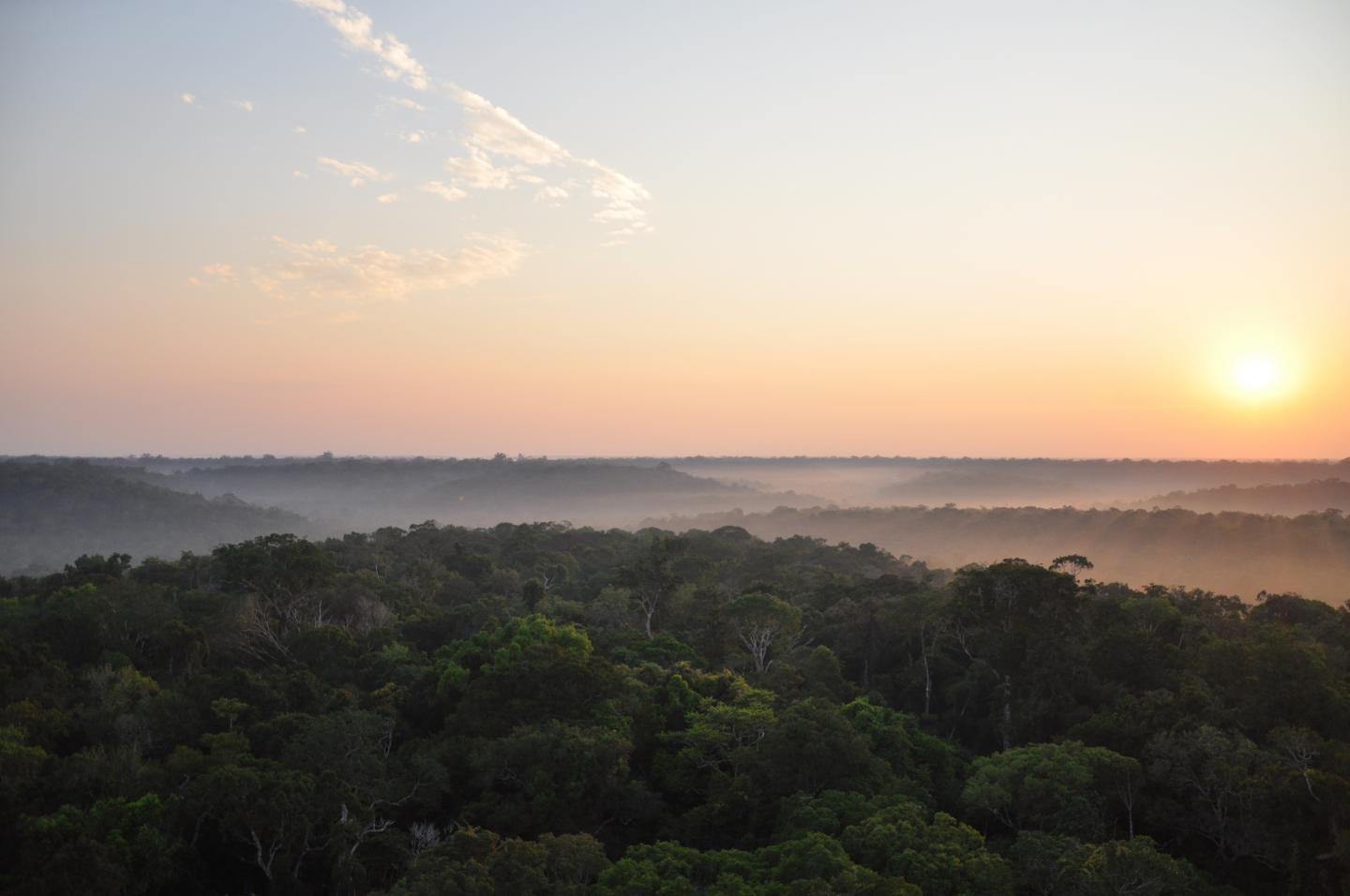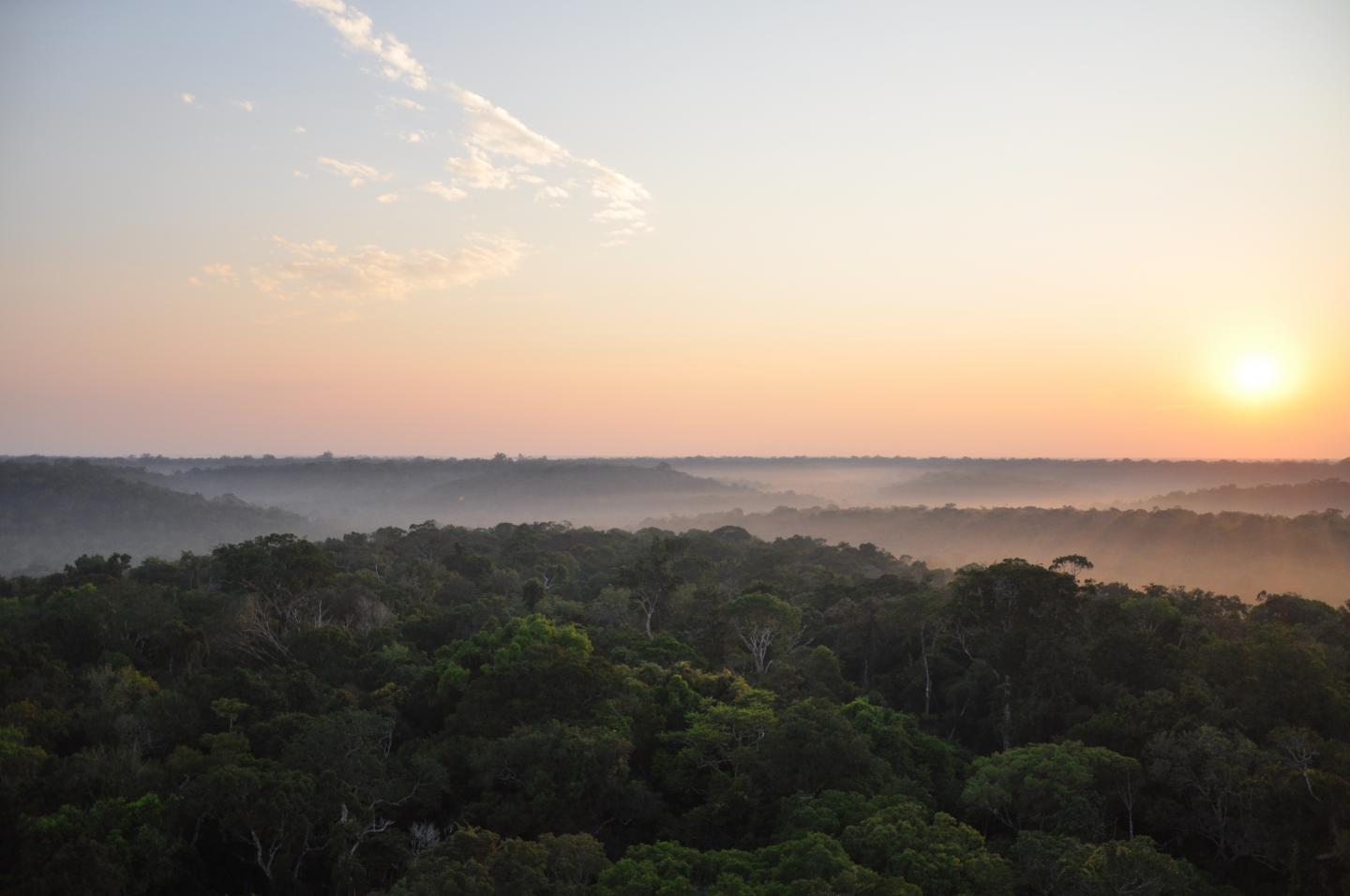
Credit: Xi Yang/University of Virginia
New York, NY — May 29, 2017 — A new Columbia Engineering study, led by Pierre Gentine, associate professor of earth and environmental engineering, analyzes global satellite observations and shows that vegetation alters climate and weather patterns by as much as 30 percent. Using a new approach, the researchers found that feedbacks between the atmosphere and vegetation (terrestrial biosphere) can be quite strong, explaining up to 30 percent of variability in precipitation and surface radiation. The paper (DOI 10.1038/ngeo2957), published May 29 in Nature Geoscience, is the first to look at biosphere-atmosphere interactions using purely observational data and could greatly improve weather and climate predictions critical to crop management, food security, water supplies, droughts, and heat waves.
"While we can currently make fairly reliable weather predictions, as, for example, five-day forecasts, we do not have good predictive power on sub-seasonal to seasonal time scale, which is essential for food security," Gentine says. "By more accurately observing and modeling the feedbacks between photosynthesis and the atmosphere, as we did in our paper, we should be able to improve climate forecasts on longer timescales."
Vegetation can affect climate and weather patterns due to the release of water vapor during photosynthesis. The release of vapor into the air alters the surface energy fluxes and leads to potential cloud formation. Clouds alter the amount of sunlight, or radiation, that can reach the Earth, affecting the Earth's energy balance, and in some areas can lead to precipitation. "But, until our study, researchers have not been able to exactly quantify in observations how much photosynthesis, and the biosphere more generally, can affect weather and climate," says Julia Green, Gentine's PhD student and the paper's lead author.
Recent advancements in satellite observations of solar-induced fluorescence, a proxy for photosynthesis, enabled the team to infer vegetation activity. They used remote sensing data for precipitation, radiation, and temperature to represent the atmosphere. They then applied a statistical technique to understand the cause and feedback loop between the biosphere and the atmosphere. Theirs is the first study investigating land-atmosphere interactions to determine both the strength of the predictive mechanism between variables and the time scale over which these links occur.
The researchers found that substantial vegetation-precipitation feedback loops often occur in semi-arid or monsoonal regions, in effect hotspots that are transitional between energy and water limitation. In addition, strong biosphere-radiation feedbacks are often present in several moderately wet regions, for instance in the Eastern U.S. and in the Mediterranean, where precipitation and radiation increase vegetation growth. Vegetation growth enhances heat transfer and increases the height of the Earth's boundary layer, the lowest part of the atmosphere that is highly responsive to surface radiation. This increase in turn affects cloudiness and surface radiation.
"Current Earth system models underestimate these precipitation and radiation feedbacks mainly because they underestimate the biosphere response to radiation and water stress response," Green says. "We found that biosphere-atmosphere feedbacks cluster in hotspots, in specific climatic regions that also coincide with areas that are major continental CO2 sources and sinks. Our research demonstrates that those feedbacks are also essential for the global carbon cycle–they help determine the net CO2 balance of the biosphere and have implications for improving critical management decisions in agriculture, security, climate change, and so much more."
Gentine and his team are now exploring ways to model how biosphere-atmosphere interactions may change with a shifting climate, as well as learning more about the drivers of photosynthesis, in order to better understand atmospheric variability.
Paul Dirmeyer, a professor in the department of atmospheric, oceanic and earth sciences at George Mason University who was not involved in the study, notes: "Green et al. put forward an intriguing and exciting new idea, expanding our measures of land-atmospheric feedbacks from mainly a phenomenon of the water and energy cycles to include the biosphere, both as a response to climate forcing and a forcing to climate response."
###
About the Study
The study is titled "Regionally strong feedbacks between the atmosphere and terrestrial biosphere."
The other contributors are: Alexandra G. Konings (Columbia University, now at Stanford University), Seyed Hamed Alemohammad (Columbia University, previously at MIT), Joseph Berry (Carnegie Institution of Washington), Dara Entekhabi (MIT), Jana Kolassa (University Space Research Association, NASA Goddard Space Flight Center), and Jung-Eun Lee (Brown University).
The study was supported by grants from NASA (grant # NNX16AO16H) and the U.S. Department of Energy (grant #DE-SC0011094).
The authors declare no financial or other conflicts of interest.
LINKS:
PAPER: DOI 10.1038/ngeo2957. Once the paper is published electronically, the DOI can be used to retrieve the abstract and full text from the Nature website by adding it to the following url: http://dx.doi.org/. Embargos for papers published in this way will lift at the time of electronic publication.
http://www.gentine.com/
http://www.engineering.columbia.edu/
http://www.nature.com/ngeo/index.html
Columbia Engineering
Columbia Engineering is one of the top engineering schools in the U.S. and one of the oldest in the nation. Based in New York City, the School offers programs to both undergraduate and graduate students who undertake a course of study leading to the bachelor's, master's, or doctoral degree in engineering and applied science. Columbia Engineering's nine departments offer 16 majors and more than 30 minors in engineering and the liberal arts, including an interdisciplinary minor in entrepreneurship with Columbia Business School. With facilities specifically designed and equipped to meet the laboratory and research needs of faculty and students, Columbia Engineering is home to a broad array of basic and advanced research initiatives, from the Columbia Nano Initiative to the Columbia Genome Center. These interdisciplinary centers in science and engineering, big data, nanoscience, and genomic research are leading the way in their respective fields while our engineers and scientists collaborate across the University to solve theoretical and practical problems in many other significant areas.
Media Contact
Holly Evarts
[email protected]
347-453-7408
@CUSEAS
http://www.engineering.columbia.edu/
############
Story Source: Materials provided by Scienmag





